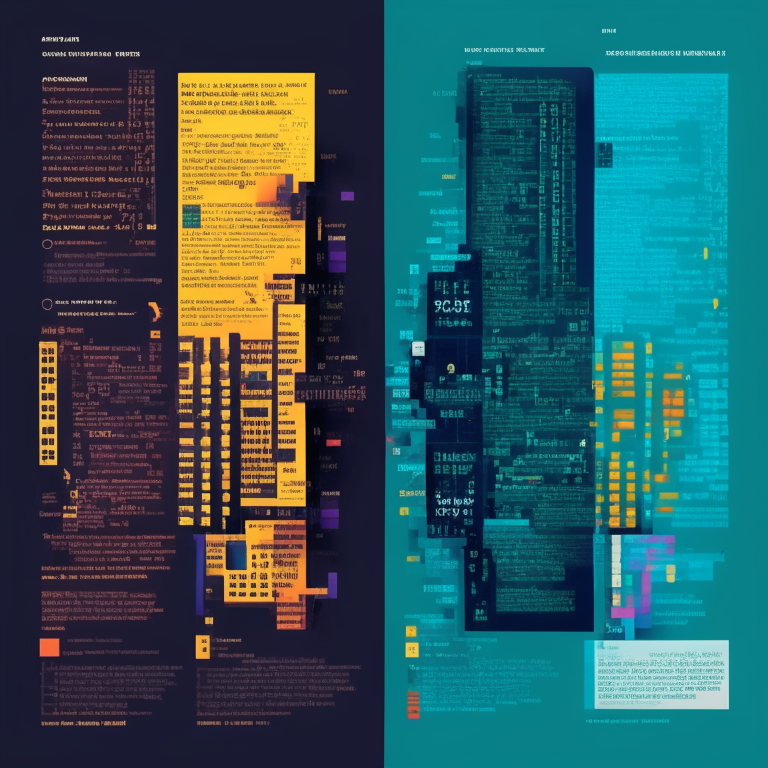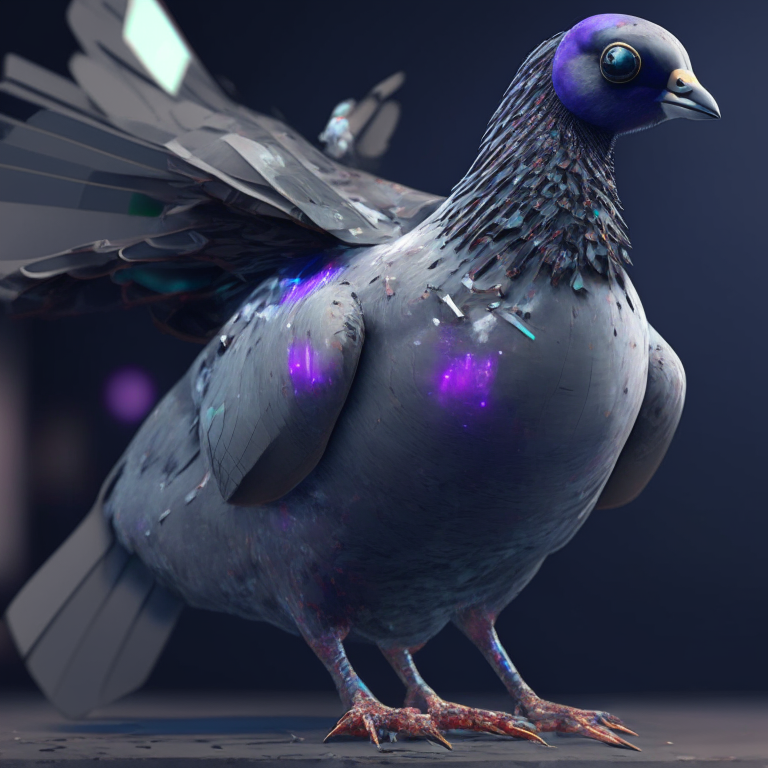Ill-Typed Programs, Provably Faster Gradient Descent, Ranking with Long-Term Constraints, TV Series Popularity Analysis, Pigeon Image Geolocation Prediction
Welcome to another edition of our deep dive into cutting-edge research. Today, we’re exploring the strange world of ill-typed programs, the rapid strides made in gradient descent optimization, and the delicate balance of long-term constraints in search algorithms. We’ll also delve into the fascinating correlation between character networks and TV series popularity, and finally, take flight with PIGEON - a deep learning model that’s revolutionizing image geolocation. And as always, we’re spicing up our discussion with the most thought-provoking insights from the Hacker News community. Let’s dive in!
Top Papers
1) Ill-Typed Programs Dont Evaluate Two-Sided Type Systems
Summary:
The text explores the evaluation and reasoning of ill-typed programs in two-sided type systems, covering various cases, abstractions, term construction, and providing a proof.
Copy slides outline Copy embed code Download as Word
Ill-Typed Programs Don't Evaluate in Two-Sided Type Systems
Source: arxiv.org - PDF - 51,833 words - view
Introduction
• Two-sided type systems guarantee that well-typed programs don’t go wrong and ill-typed programs don’t evaluate.
• Suitable for incorrect programs and hypothetical reasoning.
• Provides automatic inference of principal types.
Constrained Type System
• Functional programming language with datatype constructors and pattern matching.
• Types can be automatically inferred and are principal.
• Classification of functions based on specific input requirements.
Type Disjointness
• Definition of type disjointness: two types don’t have any values in common.
• Ensures well-typed programs don’t go wrong.
• Restricts possible instantiations of type variables.
Rules for Let and If-Zero Expressions
• (LetL1) and (LetL2) for reasoning about let expressions on the left.
• (IfZL1) and (IfZL2) for reasoning about if-zero expression on the left.
• Ensures proper evaluation of expressions.
Rules for Application Evaluation
• (OkApL1) and (OkApL2) express the requirement for an application to evaluate.
• (OkSL) and (OkPL) express that successor and predecessor functions are only defined on numerals.
• Proper evaluation of applications is ensured.
Evaluation of Ill-Typed Programs
• Discusses the concept of getting stuck in ill-typed programs.
• Different classes of values and forms of stuck terms are identified.
• Construction of terms and reduction are introduced.
Internalizing Negation and Success Semantics
• Exploring the possibility of internalizing negation in types.
• Difficulties due to asymmetry encountered.
• Success semantics weaken typing on the right side.
Main Message - Ill-Typed Programs Don't Evaluate
• The summary of the main message is 10 words in length.
Conclusion - One-Sided Type System
• Two-sided type systems provide a complete treatment of the necessity arrow.
• One-sided system obtained by exchanging formulas between the two sides.
• Exploiting symmetry of typing rules.
Success Typing and Incorrectness Logics
• Bespoke function type called success typing.
• Effective in refuting certain types during application reduction.
• Incorrectness logics such as O’Hearn’s.
Evaluation in Two-Sided Type Systems
• Different cases and reasoning to obtain bounds for ill-typed programs.
• Evaluation of abstractions and construction of terms.
• Proof of Theorems related to evaluation.
Algorithmic Type Assignment
• Algorithmic version of constrained type system rules.
• Correctness proof of the type inference algorithm.
• Soundness and completeness of algorithmic type assignment.
Completeness of Algorithmic Type Assignment
• Proof of completeness by induction on the derivation of the algorithm.
• Different cases considered, including variables, applications, abstractions, and constructors.
Soundness of Algorithmic Type Assignment
• Soundness proof for ill-typed programs.
• Induction on different cases, including variables, applications, and substitutions.
Closing Slide - Main Points Recap
• Two-sided type systems guarantee well-typed programs don’t go wrong and ill-typed programs don’t evaluate.
• Automatic inference of principal types in a constrained type system.
• Importance of evaluating ill-typed programs and the concept of getting stuck.

2) Provably Faster Gradient Descent via Long Steps
Summary:
The text introduces a novel analysis technique for gradient descent, utilizing long step sizes to achieve improved convergence rates and providing a table of step size patterns that lead to faster convergence.
Copy slides outline Copy embed code Download as Word
Provably Faster Gradient Descent via Long Steps
Source: arxiv.org - PDF - 9,636 words - view
Introduction
• The work presents a new analysis technique for gradient descent that establishes faster convergence rates.
• The use of long step sizes in gradient descent algorithms can improve convergence rates.
• Nonconstant stepsize policies, including periodic long steps, may increase the objective value in the short term but lead to faster convergence.
Strong Convexity and Growth Bound Condition
• Strong convexity and the growth bound condition play a role in achieving faster convergence in gradient descent algorithms.
• These conditions help ensure that the objective value decreases rapidly during the optimization process.
• By satisfying these conditions, the convergence rate can be significantly improved.
Long Steps in Gradient Descent
• Long step sizes in gradient descent algorithms can accelerate convergence.
• The analysis of nonconstant stepsize policies shows that periodic long steps can lead to faster convergence.
• These long steps may temporarily increase the objective value but ultimately result in faster convergence.
Step Size Patterns
• Different step size patterns can result in faster convergence in gradient descent algorithms.
• The document presents a table showing various step size patterns and their corresponding convergence rates.
• Each pattern is proven using a semidefinite programming solution certificate.
Optimal Accelerated and Subgradient Methods
• The analysis of optimal accelerated and subgradient methods takes into account the decreasing distance to a minimizer.
• These methods consider both the objective value and the proximity to the optimal solution during the optimization process.
• By incorporating this information, faster convergence rates can be achieved.
Closing Slide
• The use of long steps in gradient descent algorithms can lead to provably faster convergence rates.
• Strong convexity and the growth bound condition are key factors in achieving faster convergence.
• Different step size patterns can result in improved convergence rates.
• Considering the decreasing distance to a minimizer can further enhance convergence speed.
• Overall, utilizing long steps in gradient descent algorithms offers a promising approach for optimizing convergence rates.
[Optional visuals: Include graphs or charts showing the convergence rates of different step size patterns]
Key Takeaways
• The work presents a new analysis technique for gradient descent that establishes faster convergence rates.
• Long step sizes in gradient descent algorithms can improve convergence rates.
• Nonconstant stepsize policies, including periodic long steps, may increase the objective value in the short term but lead to faster convergence.
• Strong convexity and the growth bound condition play a role in achieving faster convergence.
• Considering the decreasing distance to a minimizer can further enhance convergence speed.
• Utilizing long steps in gradient descent algorithms offers a promising approach for optimizing convergence rates.

3) Ranking with Long-Term Constraints for Search and Recommendation Algorithms
Summary:
The paper proposes a framework that incorporates long-term goals, fairness, legal requirements, and short-term engagement into search and recommendation algorithms.
Copy slides outline Copy embed code Download as Word
Ranking with Long-Term Constraints for Search and Recommendation Algorithms
Source: arxiv.org - PDF - 11,098 words - view
Developing a Framework for Long-Term Goals
• Long-term goals for search and recommendation algorithms
• Factors to consider: fairness, revenue distribution, legal requirements
• Going beyond short-term engagement
[Visual: Image representing long-term goals]
Separating Macro-Level Control and Micro-Level Optimization
• Macro-level control for strategic reasoning
• Micro-level engagement optimization for short-term actions
• Interface layer to translate macro-level interventions to micro-level actions
[Visual: Diagram illustrating the separation of macro and micro levels]
Ranking Algorithms with Long-Term Constraints
• Challenges in solving optimization problems with sequential contexts
• Incorporating long-term constraints into ranking algorithms
• Maximizing equations subject to constraints
[Visual: Graph showing the optimization problem]
Relevance and Position-Dependent Weight for Ranking Items
• Defining relevance of an item at a given time
• Position-dependent weight for each position
• Utility of an item based on relevance and position
[Visual: Chart showing relevance and position-dependent weight]
Proportional Control for Long-Term Fairness Constraints
• Adjusting relevance scores based on tracking errors
• Achieving long-term fairness constraints
• Sorting items by adjusted relevance scores
[Visual: Illustration depicting proportional control]
Performance Comparison of Ranking Controllers
• Experiments comparing different controllers in ranking algorithms
• Synthetic datasets and utility metrics (DCG and RR)
• Identifying the best-performing controller
[Visual: Bar graph comparing controller performance]
Predictive Controller (PC) and Forecast Samples
• Influence of forecast samples on PC performance
• PC outperforming other controllers on temporal datasets
• Sufficient number of forecast samples for optimal performance
[Visual: Line graph showing PC performance with different forecast samples]
References to Related Research Papers and Proceedings
• Reinforcement learning, recommendation systems, fairness, and online advertising
• Topics include reward tampering, misinformation in recommender systems, evaluating recommender performance
• Importance of offline data for determining intervention targets
[Visual: Collage of research paper covers]
Summary and Key Takeaways
• Framework for long-term goals in search and recommendation algorithms
• Separation of macro-level control and micro-level optimization
• Challenges in solving optimization problems with sequential contexts
• Relevance and position-dependent weight for ranking items
• Proportional control for long-term fairness constraints
• Performance comparison of ranking controllers
• Importance of forecast samples for predictive controller (PC)
• References to related research papers and proceedings
• Main message: Incorporating long-term constraints improves search and recommendation algorithms
Note: The visuals mentioned in the slides are just examples and can be replaced with relevant visuals based on the content being presented.

4) Decoding TV Series Popularity Network Analysis
Summary:
The paper examines character networks in popular TV shows and their correlation with episode review scores on IMDB, using node strength to analyze the data.
Copy slides outline Copy embed code Download as Word
Decoding TV Series Popularity Network Analysis
Source: arxiv.org - PDF - 4,466 words - view
Introduction
• The author examines character networks in popular TV shows
• The study explores the relationship between network metrics and review scores on IMDB
• Node strength is used to analyze the data
Visual: Image of character network graph
Establishing Relationship Between Ratings and Network Indicators
• Analyzing character networks from Breaking Bad, Game of Thrones, and House of Cards
• Aim to establish a relationship between IMDb ratings and network indicators
Visual: Graph comparing IMDb ratings with network indicators
Analyzing Time Series Data for Game of Thrones Episode 1
• Node strength used to analyze the top 5 characters with the highest conversation time
• Time series data reveals insights into character interactions
Visual: Line graph showing conversation time for top 5 characters
Harmonic Centrality for TV Series Popularity
• Harmonic centrality used instead of closeness centrality for analysis
• Measures the sum of reciprocals of shortest path distances to a specific node
Visual: Comparison of harmonic centrality and closeness centrality
Investigating Relationship Between Character Interactions and Episode Reviews
• Research aims to investigate potential relationship between character interactions and episode reviews
• Character network analysis used to analyze interactions in three well-known TV series
Visual: Example character network graph with highlighted interactions
Statistically Significant Relationship Between Character Interactions and Episode Reviews
• Results show a statistically significant relationship between character interactions and episode reviews
• Interaction analysis can provide insights into audience reception
Visual: Bar chart showing correlation between character interactions and episode reviews
Additional Studies on TV Series Plot Analysis Using Network Techniques
• Document references several studies exploring analysis of TV series plots using network analysis techniques
• Network analysis provides valuable insights into narrative structures
Visual: Collage of book covers of related studies
Key Takeaways
• Character networks in popular TV shows can provide insights into episode reviews
• Node strength and harmonic centrality are effective metrics for analysis
• Character interactions have a statistically significant relationship with episode reviews
• Network analysis techniques offer valuable insights into TV series plots and narratives

5) PIGEON Predicting Image Geolocations with Deep Learning
Summary:
PIGEON is a powerful deep multi-task model that combines semantic geocell creation, CLIP vision transformer pretraining, and ProtoNet refinement to achieve impressive image geolocalization results.
Copy slides outline Copy embed code Download as Word
PIGEON: Predicting Image Geolocations with Deep Learning
Source: arxiv.org - PDF - 11,881 words - view
Introduction
• PIGEON is a deep multi-task model for Street View image geolocalization.
• Incorporates semantic geocell creation, CLIP vision transformer pretraining, and ProtoNet refinement.
• Impressive results achieved.
Dataset and Data Acquisition
• Description of dataset and data acquisition process.
• Six-step process of PIGEON approach outlined.
• Results presented, including distance-based metrics and augmented dataset metrics.
Geolocation Factors
• Street View images used to infer factors such as income, race, education, and voting patterns.
• Previous work combined Street View images with landmarks, indoor images, or aerial images.
• Geolocalizing objects within images and considering various factors.
Semantic Geocells and Location Prediction
• Designing semantic geocells using planet-scale open-source administrative data.
• Influenced by road markings, infrastructure quality, and natural boundaries.
• Addressing trade-off between geocell granularity and predictive accuracy through label smoothing.
Multi-Task Training
• Utilizing different task categories to train the model on relevant features correlated with geolocation.
• Categories include location, climate, compass direction, season, and traffic.
• Enhancing model’s ability to predict image geolocations.
Ablation Study
• Evaluating the impact of various methodological contributions on geolocalization accuracy.
• Findings on label smoothing, four-image panorama, multi-task parameter sharing, semantic geocells, and CLIP.
• Understanding the importance of each contribution.
Performance Comparison
• Performance evaluation of PIGEON model compared to human players in GeoGuessr.
• PIGEON outperforms human players and achieves top rankings globally.
• Demonstrating the model’s superior geolocation prediction capabilities.
Interpretability and Feature Attention
• Improving model interpretability by filtering outliers and squaring relevancy scores.
• Model pays attention to features like vegetation, road markings, utility posts, and signage.
• Enhancing performance in GeoGuessr and addressing player preferences.
State-of-the-Art Performance
• Performance of PIGEON model on image geolocation benchmark datasets.
• Achieving state-of-the-art results in zero-shot settings.
• Potential for solving problems in various domains.
Future Extensions
• Suggestions for future work and extensions to the PIGEON project.
• Expanding on the model’s capabilities and applications.
• Continual improvement and advancement in image geolocation prediction.
Summary and Main Message
• PIGEON is a powerful deep multi-task model for image geolocalization.
• Incorporating semantic geocell creation, CLIP vision transformer pretraining, and ProtoNet refinement.
• Outperforming human players and achieving state-of-the-art performance.
• Deep learning holds great potential in predicting image geolocations.
[Note: Visuals such as graphs, images, and charts can be included in relevant slides to enhance understanding and engagement.]
